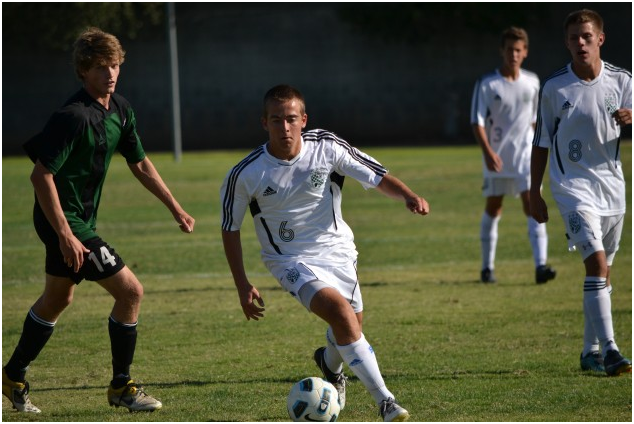|
Soccer Speed Drills to Leave Opponents in the Dust
 If you really want to be able to leave your defenders in the dust this soccer season, you need to further develop quickness and both linear and lateral speed. Make the most of your time with the ball by incorporating these variations of soccer speed drills into your team's pre-season program. Remember, for all of these soccer speed drills, a proper warm-up of five to 10 minutes is critical. Players should feel loose, warm and explosive before doing any type of speed work. Plyometric Drills When it comes to developing speed on the soccer field, athletes need to take advantage of plyometric training. (See Best Plyometric Exercises for Soccer Players by Position.) Plyometrics stretch the muscle and then quickly force a maximal concentric contraction, so they capitalize on the muscle's stretch shortening cycle. Focus on minimizing time spent on the ground. Perform three to eight sets of each of these three plyo drills, resting three minutes between sets. Bounding Starting from a jog, bound as high as possible in the air while maintaining proper running form (knee and arm drive). Perform 10 jumps. Two-Legged Frog Jumps Starting in a half squat position with arms at sides, explosively jump forward. When you land, minimize time on the ground and explosively jump up and forward again. Perform for 10 to 12 seconds. Staying on the ball of your foot, hop forward explosively and continue doing so, staying on the same leg. Try ten hops and measure the total distance covered. This will be your baseline. Try to improve this distance over the period of a few weeks. Make sure to train both legs. (Add this Wide-Leg Bounding exercise.) Running Work It's pretty obvious that speed drills for soccer need to include some sort of running exercises. Here are three extremely effective ones that will have you moving at top speed in no time. Downhill Running Look for a ten percent incline hill. To give you an idea of what 10 percent looks like, place a six-inch-high book under a five-foot board. Any hill will do, but if you find yourself flailing your arms and losing control, you're attacking a hill that is too steep. Downhill running allows you to go faster than you normally can and teaches the nerves to fire faster, resulting in increased speed. Keep your distance to about 65 yards max or whatever your hill will allow. Rest two minutes between sets and repeat six to eight times. 12 to 3 Drills Place one cone on the ground, then measure ten steps straight ahead and set another cone. This will be your twelve o'clock cone. Place three other cones at one, two, and three o'clock in relation to the first cone. These should all be ten large steps away from the first cone. Start at the first cone and sprint toward 12. Get low and quickly accelerate around the cone and back to the starting cone. Continue to sprint to the one, two and three o'clock cones respectively, always coming back to the starting cone. This drill works on speed with change of direction. Rest two minutes between sets and repeat three to five times. Sprint with Ball Line players up on the sideline, partnered up in groups of two, with the groups spaced ten yards apart. One ball is needed per group. Set up a line of cones 45 yards away so the players know how far to dribble. One player in each group sprints with the ball toward the line of cones. These players get a one- or two-second head start before their partners take off and attempt to catch them. Once they reach the cones, the players dribbling and the ones chasing switch roles and sprint back to the sideline. Players dribbling should keep the ball within a reasonable distance. In other words, no "kick and run" moves are allowed, because in soccer you need to be fast with and without the ball. Make sure you practice both. Do this for a total of five minutes, switching partners each time you reach the cones or the sideline.
|
|
|







